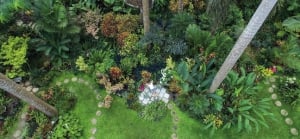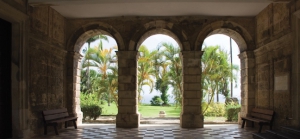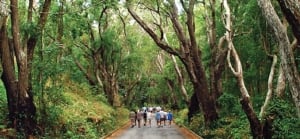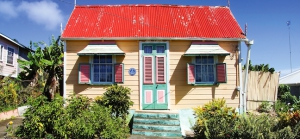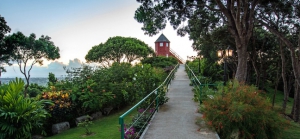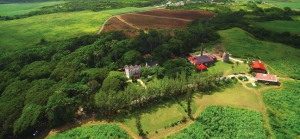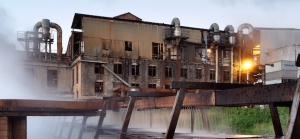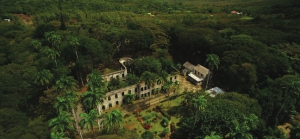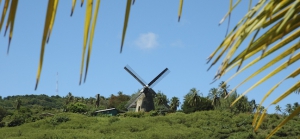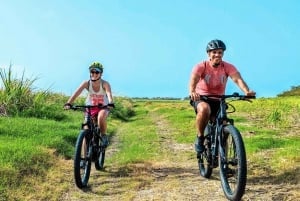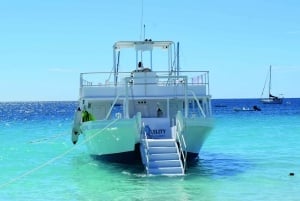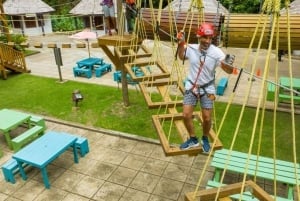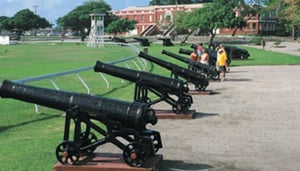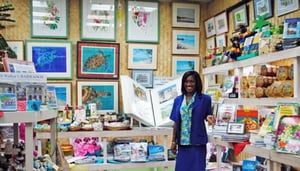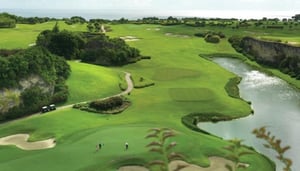Countryside
Certainly the heart of Barbados is its countryside. Like the coastline, it is varied in topography and diverse in what it has to offer, making up the greater part of the island and arguably the most interesting part of it. As you leave the city, the nearness and easy access of rural Barbados can be a pleasant surprise, and no one point is more than 45 minutes away from another. Barbados was formed just 50 million years ago when coral limestone was pushed up between two tectonic plates. As a result, a drive through our countryside will reveal lots of seeming contradiction - sedimentary clay hills in one place, limestone caves in another, shaded gullies, lush rolling fields, rugged cliffs and stunning dramatic scenery. Talk about photo ops!
Scenic views (like the one from Farley Hill), friendly faces and sometimes farm animals greet you - most often little bands of black belly sheep. You might even spot a green monkey! Stop for a coconut or snowcone, or an ice-cold Banks and a ham cutter at one of our many village rum shops. Nigel Benn's Auntie's shop is a good one to visit. Try your hand at a domino game - the pace is deliciously slow, which says a lot for an island already operating on Bajan time.
Our countryside encompasses St. George and St. Thomas (the only two parishes without a coastline) as well as the interior, more elevated regions of our coastal parishes - St. John, St. Philip and the lush fruit-tree filled hills of St. Joseph for example, the breadbasket parishes with the most fertile soils. The only real exception to this rule is St. Michael - our urban center.
St. George boasts Gun Hill Signal Station and its Lion, a former military stronghold and watchpoint turned local attraction, and St. George parish church, one of the oldest intact examples of 18th century architecture on our island. Fittingly there is a parish church in every parish, ably adding to the famed local quota of 'a church for every rum shop'. The highest point on the island, Mount Hillaby, is situated in St. Thomas, as are Earthworks Pottery and On The Wall Art Gallery - great stops for a souvenir, with a wide but tasteful selection of local products and art.
Both St. George and St. Thomas sit at the centre of the island and are highly residential, a gradual transition from the suburbs with its heights and terraces out into the more rural parts of the island. Locals favor these areas because they provide the best of both worlds - easy access to urban areas without being at the centre of their activity. These parishes tend to get more rainfall as well and therefore are markedly lush and green. As you head deeper into the rural districts, immaculate plantation houses and picturesque villages dot the countryside.
Barbados' agricultural history is marked by a 300 year old sugar industry which still survives today, unlike on other Caribbean islands. Imagine driving with the top down on your mini moke (or perhaps with the a/c all the way up in your sedan) past fields of sugar cane, and sugar estates with their rows of royal palms - our Bajan skyscrapers. You can see our largest working sugar factory, Andrew's, in action, or visit our last mill to operate - Morgan Lewis Windmill as you traverse 'these fields and hills'.
Interestingly enough, former plantations convert marvelously into amazing golf courses. Apes Hill is a good example. They also do brilliantly as local attractions. Sunbury Great House and St. Nicholas Abbey are gorgeous show houses, well preserved with historic treasures and kept very much the same as in their heyday. At the Abbey, sugar is still processed and rum distilled and bottled for a quaint look into the heritage of a bygone era.
Besides sugarcane, Barbados also grows a wide variety of local produce. Markets and vendors abound all over the island and people never miss a Saturday morning trip to the country markets, such as Brighton in the St. George valley and Redland in St. John, to garner the freshest of produce, 'dirt' cheap (if you'll pardon the pun).
And then there's the gardens - gorgeously rich-flowered and simply bursting with colour. Hunte's, Andromeda, Flower Forest, Welchman Hall Gully - just begging for the appreciative eye. It may be worth mentioning too that in this little island chock full of lesser known treasures, there's also some oil to be found! In the countryside, activities abound. Barbados, besides having a sophisticated road network, is densely tracked, so the outback trails and rougher-cut country roads become a fitting backdrop for the Barbados rally season, which is always highly patronized. Hiking and hashing, though less adrenaline filled, are also favorite activities. There are plenty of planned day and night tours each week through the Barbados National Trust's Hike Barbados and the Barbados Hash House Harriers. Best of all they're free!
You can descend to the depths of Barbados with a visit to Harrison's Cave, rise above the tree-tops on Aerial Trek's zipline, or sit back and watch a game of polo at the stunning Lion Castle Polo Estate, or have a game of paintball at Kendal Sporting. Join the locals at Naniki for a jazzy Sunday lunch or at Lemon Arbour for a good lime and to sample some fab local delicacies, or just take a picnic basket to lovely Codrington College.
So as you can see, a drive into the country is more like an adventure - a bit of a journey into Barbados' past, a scenic route from one coast to the other, and a fabulous opportunity to get out there and experience some of the best attractions our island has to offer. If you get a bit lost, just remember that 'all roads lead to Bridgetown', or so it is widely believed. You may wish to try following the bus stops marked 'To Town' until you find a familiar landmark or just ask someone the way - Bajans are always willing to point you in the right direction. Whether or not those directions actually make any sense to you, is another story.


